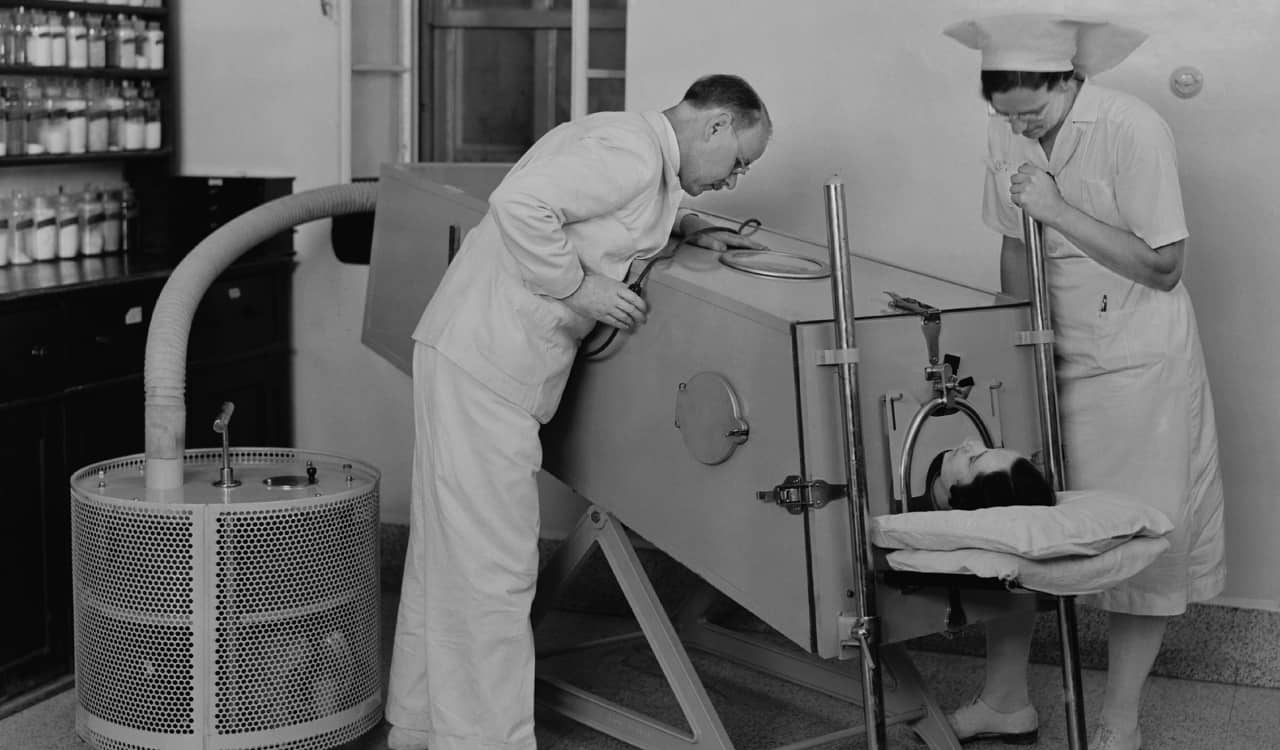Medical science has been advancing heavily over just the last 5 to 10 years, yet the advancements we’ve made in the last few decades are tremendous. The discoveries we’ve come across, medications and vaccines we’ve made, and new treatments implemented are incredible. Now, picture a world without a lot of these things. That was the case several decades ago to hundreds of years ago. Old medical treatments we know of today might seem insane to most people today.
Back then, we could not blame others for assuming something made sense. We knew very little about the drugs we were consuming and trusted doctors to come up with useful medical treatments. While many of those old medical treatments might be based on a lack of knowledge, others revolved around religion. Many more revolved around what one assumed based on treatments used on animals, and much more. Since so many of these old medical treatments were pretty weird, we wanted to highlight a few of them. Let’s get started!
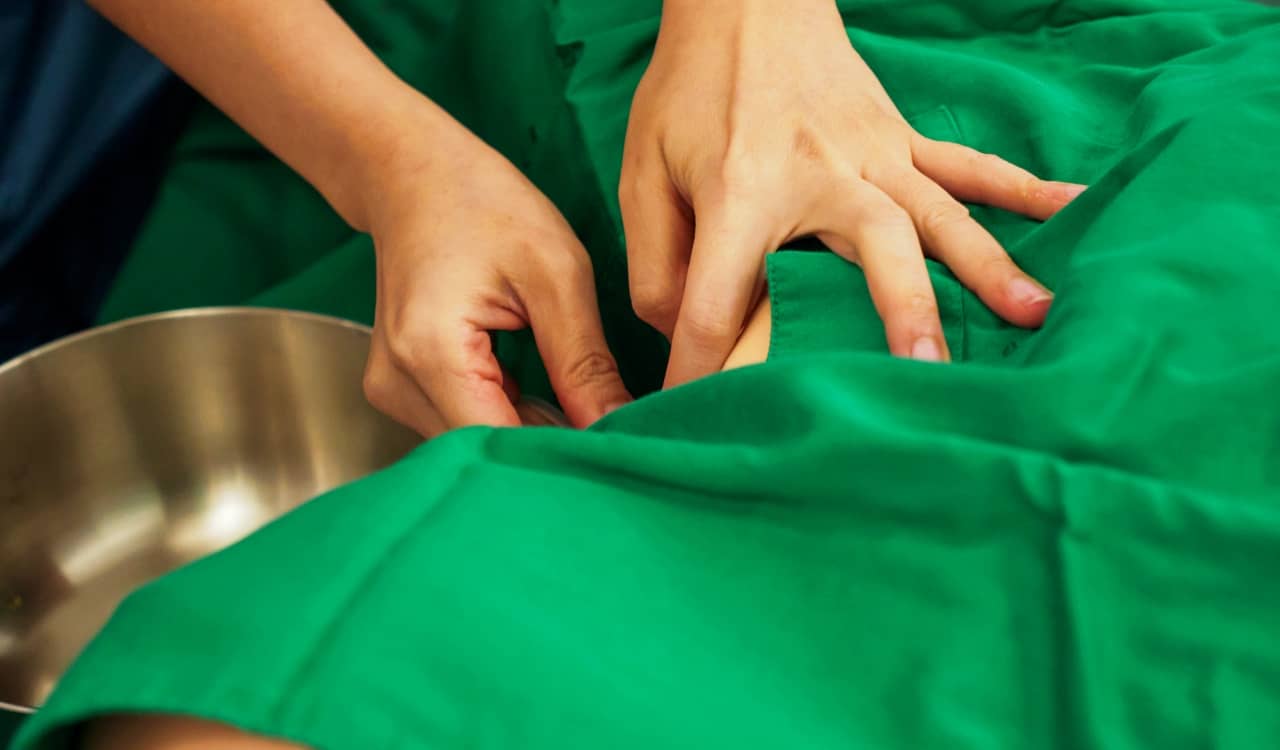
Lithotomy
- Time Period: 2000 B.C. to 1800s A.D.
Lithotomies are not really common today and it is likely you’ll never see them performed in a developed nation on anyone. Yet in the B.C. period, this was a relatively common practice. Surgeons from ancient Egypt, Persia, Rome, India, and Greece were known to have performed them. Some even wrote about the surgery, which is obviously why we know about it today. This surgery was performed to remove bladder stones. Yet they did not go about this in an understandable fashion. They went in through the perineum, which is the space between one’s private parts and anus.
The patient laid on their back, feet apart, and the doctor used a blade to pass through the territory we referenced and into the bladder. This would likely be easier with a man but for women, it could result in a lot more problems. The surgeon then inserted their fingers or surgical instruments into the rectum or urethra to assist in pushing the stone(s) out. To the shock of no one, roughly 50% of the time, this led to the person dying. The procedure was done up to the end of the 19th century until we began using far better methods.
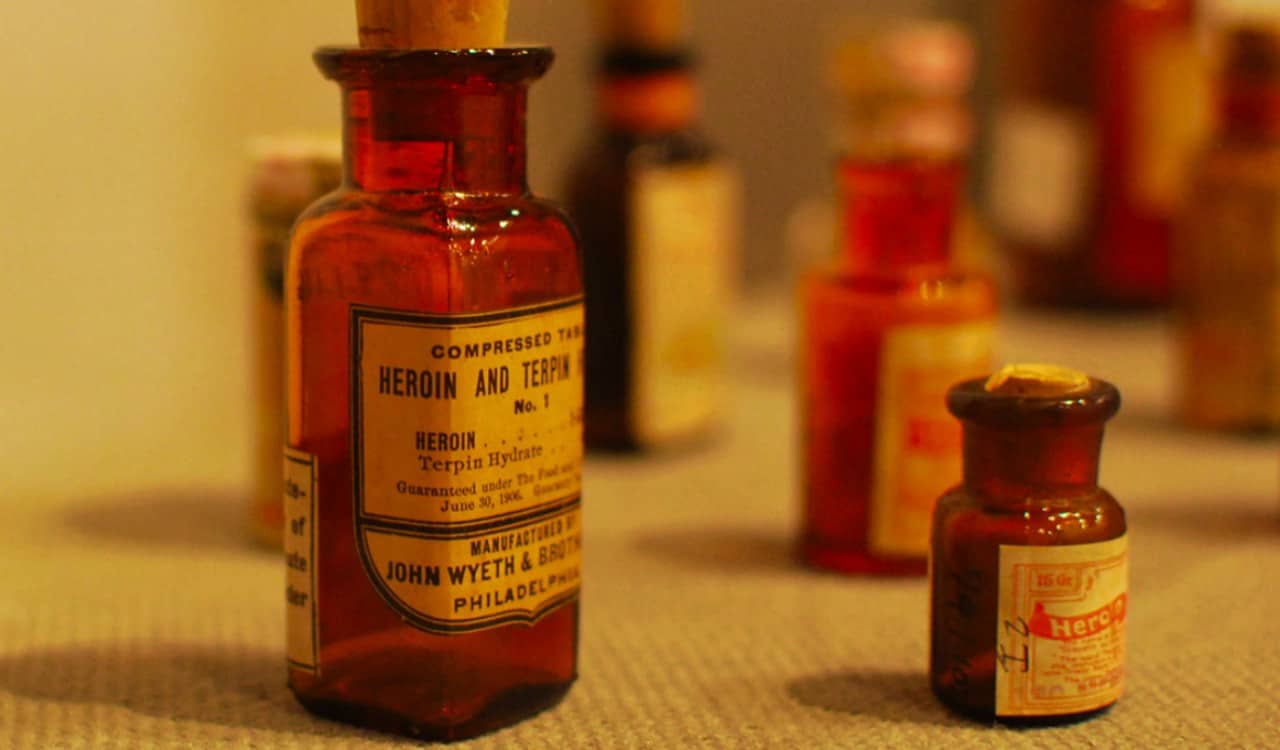
Heroin Use For Coughs and Other Ailments
- Time Period: 1898 to 1924
Heroin is a well-known street drug today but it used to be offered as an over-the-counter drug to help people with various ailments. Formed by the Bayer company, yes THAT Bayer company, they marketed it as a substitute for morphine and the highly abused opium. Heroin is kind of morphine, but it’s more like a cousin to it. For years, places like Canada used to use it in hospitals over morphine. Scientifically, it is referred to not as Heroin but diacetylmorphine or diamorphine.
Bayer claimed it was “non-addictive” and “safe for children.” Since it was virtually the same stuff as the very thing it was marketed not to be, the drug was taken off the market by the American government in 1924. Beforehand, Heroin was marketed as a drug to help with things like coughs. It never treated or assisted with cough issues but due to the chest pain coughs can cause, it likely could help with that. Old medical treatments like this lasted for a very short timeframe compared to other stuff.
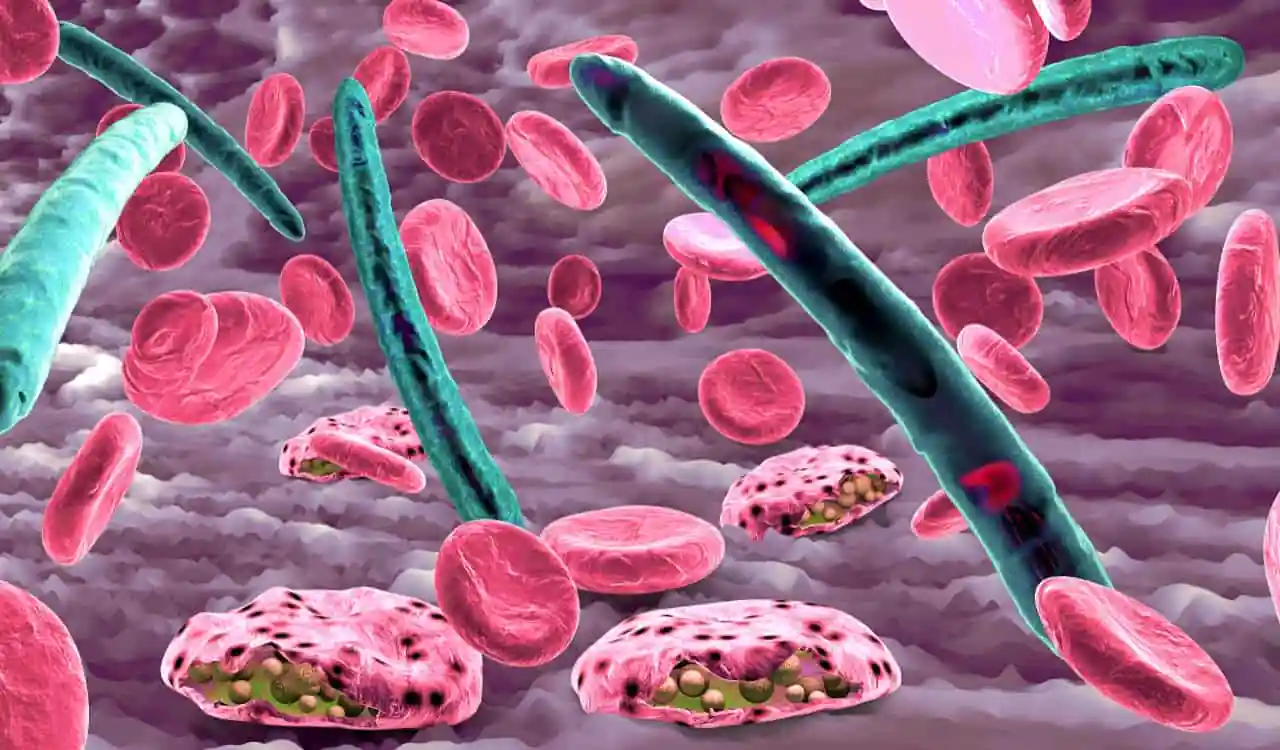
Using Malaria To Treat Syphilis
- Time Period: 1920s to 1950s
You might laugh at this now, but at one point in our human history, someone had the bright idea to fight syphilis with malaria. It can seem crazy, but they did have a somewhat understandable concept in mind. They assumed that the fever that malaria was able to produce could fight syphilis. This was assumed during the 1920s, and we did have some fever treatments by then to help, but it was still a huge risk. While old medical treatments like this might seem insane, this kind of worked out. Many who were injected with malaria were able to eliminate the syphilis virus.
However, those same people who recovered from syphilis then had intense fevers and longstanding side effects from their exposure to malaria. The odd part is that their entire plan revolved around a fever, which could have been implemented with other much safer viruses. We now know syphilis is not exactly cured by fevers. Rather, the entire immune system must play a part in ridding your body of it. Today, we use antibiotics to treat it but this just helps with the symptoms, your immune system still has to remove the virus.

Kellogg’s Corn Flakes Used To Stop Self-Pleasure
- Time Period: 1894 to Early 1900s
While pleasuring one’s self is perfectly healthy and even advised for people to do over randomly hooking up with strangers, some people were not a fan. Enter J.H. Kellogg, who was the inventor of the notable Kellogg’s Corn Flakes cereal and also happened to be a real doctor. While he was a health activist like many doctors, he did not target obesity or drug abuse. Rather, he wanted to stop sexual urges among men and women. Only heathens touched themselves, Kellogg thought.
Keep in mind, in the 19th Century, this personal act was thought to be a bad thing. It comes from biblical connections to “spilling seed” and other obviously incorrect assumptions. Kellogg felt that the real problem was that these “deviants” were just sick, and needed to be healthier. Thus, a healthy diet could prevent them from wanting to play nighttime pattycake with themselves. In the most shocking result that you’ll ever read, his concept did not have great results. Yet the cereal became quite popular anyway.
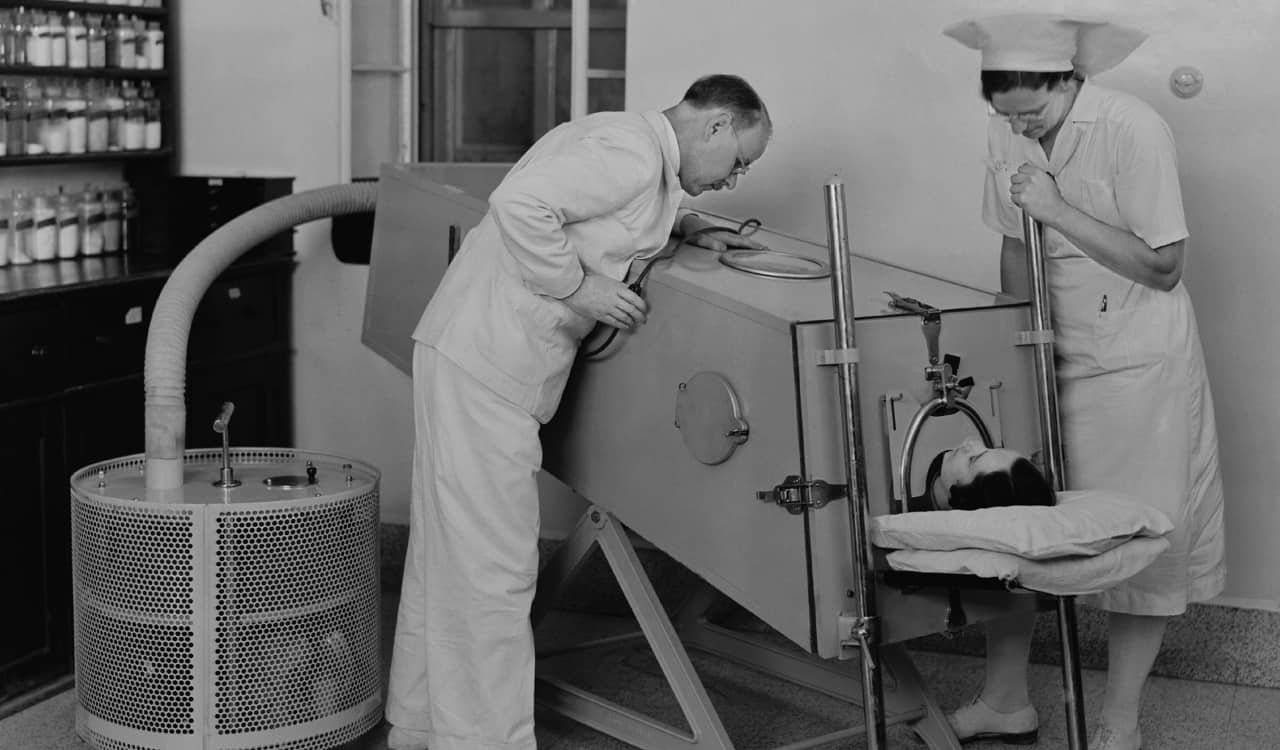
The Iron Lung
- Time Period: 1670 to 1950s
To be fair to some old medical treatments, they were victims to the time they took place. Technology in the medical world did not exactly get to a supremely advanced state until the 1980s truthfully. However, tech still existed to help people who suffered through difficult illnesses. One of those treatments was the infamous “iron lung.” Before the polio vaccine was invented in the 1950s by Jonas Salk, it was an epidemic that killed thousands. Over 50,000 were infected in America alone.
Polio caused a lot of problems, but one of the most notable and severe was its effect on human lungs. One of the most effective ways to save someone’s life was to put someone inside a large, coffin-like machine. The iron lung assisted people by helping them breathe when their chest muscles were often paralyzed due to polio. Of course, some were put into them for just having trouble breathing. Thus, some spent a few weeks in them while others could spend years. The device was used for centuries before this, but the polio epidemic led to its most notable use.

Plombage
- Time Period: 1930s to 1950s
Tuberculosis was a horrible condition that used to end the life of everyone who caught it. Before medication was made to treat and eventually cure the infection. Contrary to popular belief, tuberculosis does not just affect the lungs. It can cause issues to the kidneys, brain, eyes, and intestines too. Some only have issues in one of these areas or multiple. Yet lungs were the most commonly affected. Prior to proper treatment, physicians assumed a forced collapsed lung, or plombage, would cure the issue. It sounds crazy but here was their logic.
Since a collapsed lung would heal faster than tuberculosis would take to get out of the system, forcibly collapsing the lung would remove the issue as the lung heals. To do this, doctors would create a cavity underneath the upper ribs and fill it with materials like paraffin wax, ping pong balls, and much more. Shockingly, this did not exactly help and carried a lot of risks. Some ended up hemorrhaging, developing an infection, or causing other respiratory problems. Old medical treatments like this came as a result of ignorance, but today we know this sort of thing does not really help a lot or at all.

Hemiglossectomy
- Time Period: 1700s to 1800s
While the hemiglossectomy is still performed today, it is VERY rare to see. This is the surgery used to remove part of a person’s tongue. Often, we only remove it today due to oral cancer in an attempt to cut it out and prevent the spread. Now keep in mind for a second that, again, this involves the literal removal of a part of your tongue. Are we all following? Good, because you would assume that removing any section of the tongue would make talking a bit harder.
However, this surgery used to be done in the 18th and 19th centuries in an attempt to correct a stutter. At the time, several physicians believed the tongue was to blame for speech problems. Thus, removing a small or large part of the tongue only made sense, right? No. It NEVER worked. In fact, some people died and many more experienced even worse speech-related issues. Old medical treatments like this were barbaric and there was no medical evidence to prove it even worked!

Curing Rabies With Raw Veal
- Time Period: Late B.C.
Pliny the Elder is known by historians as a critical asset to ancient history, at least when it comes to Rome. He happened to be in multiple places which allowed him to come across massive historical information. First, he was both an Army and Naval Commander for Rome. Second, he was obsessed with the natural world around him and studied a lot of natural and geographic phenomena. Third, he was a good friend of Emperor Vespasian. He also studied and took part in both law and philosophy. This put him in some of the most notable areas of Rome.
The man even died as he attempted to rescue a family friend from the eruption of Mount Vesuvius. He once wrote in his Naturalis Historia (Natural History) book that anyone bitten by a mad dog should be treated by having their wound cut open and covered with raw veal. The person should then eat lime and hog’s fat on top of drinking a drink made of both wine and boiled badger dung. To be fair, some of this could help slightly. As the meat could soak up some of the blood and act as a bandage that partially removed some of the rabies one contracted. Yet it could not remove most of it. The drink would be terrible too.

Toothache Cured By Electrotherapy
- Time Period: 1700s to 1900s
Electrotherapy can be used today for multiple issues, but for many years physicians used electricity in an attempt to treat numerous illnesses or problems. One that seemed to be pretty commonplace was its use on toothaches. The concept was pushed heavily by British evangelist John Wesley. In his book Primitive Physick, Or, An Easy and Natural Method Of Curing Most Diseases, he wrote about numerous illnesses and how to treat them. To be clear, this man was a cleric and theologian… not a doctor.
Yet he suggested that toothaches should be treated with electricity in his book, written in the 1740s. Electricity was used for a lot of issues at the time from tapeworms and paralysis to epilepsy and much more. Thus, using it for tooth problems only made sense, right? Wrong. This never truly worked but the electricity could jar someone’s brain, making them forget about the ache. But that is like saying your right hand hurts, so you should stab your left hand to make the right feel better. It is not exactly useful to do. Old medical treatments like this tried to use a popular treatment of the time for darn near everything.

Hair and Deer Bones Were The Perfect Epilepsy Treatment
- Time Period: 1700s
There have been SEVERAL treatments for epilepsy ever since the B.C. era. Yet one book written by William Penn offered medical treatments for numerous illnesses but had a particularly interesting treatment for epilepsy. In The Book of Phisick, Penn writes that one should cook a strong man’s hair with a deer leg bone. The idea is to turn it into powder and then eat it leading up to the new moon. You’ll likely have a few questions after reading this. First, deer bone and strong man’s hair? Second, what is up with the moon here?
The hair use was thought to strengthen you since it came from a strong person. Bones were used for A LOT of medications at this point, so that is why it is present. Regarding the moon, medical professionals have debated if the moon has had any effect on seizures for hundreds of years. Since light can trigger seizures, seeing the bright moonlight after being in a dark area could in theory start one up. However, this is not exactly how it works as strobe lighting seems to be the biggest cause. Perhaps going through a wooded area at night could manufacture a strobe-like experience, but that would be the cause, definitely not the moon.
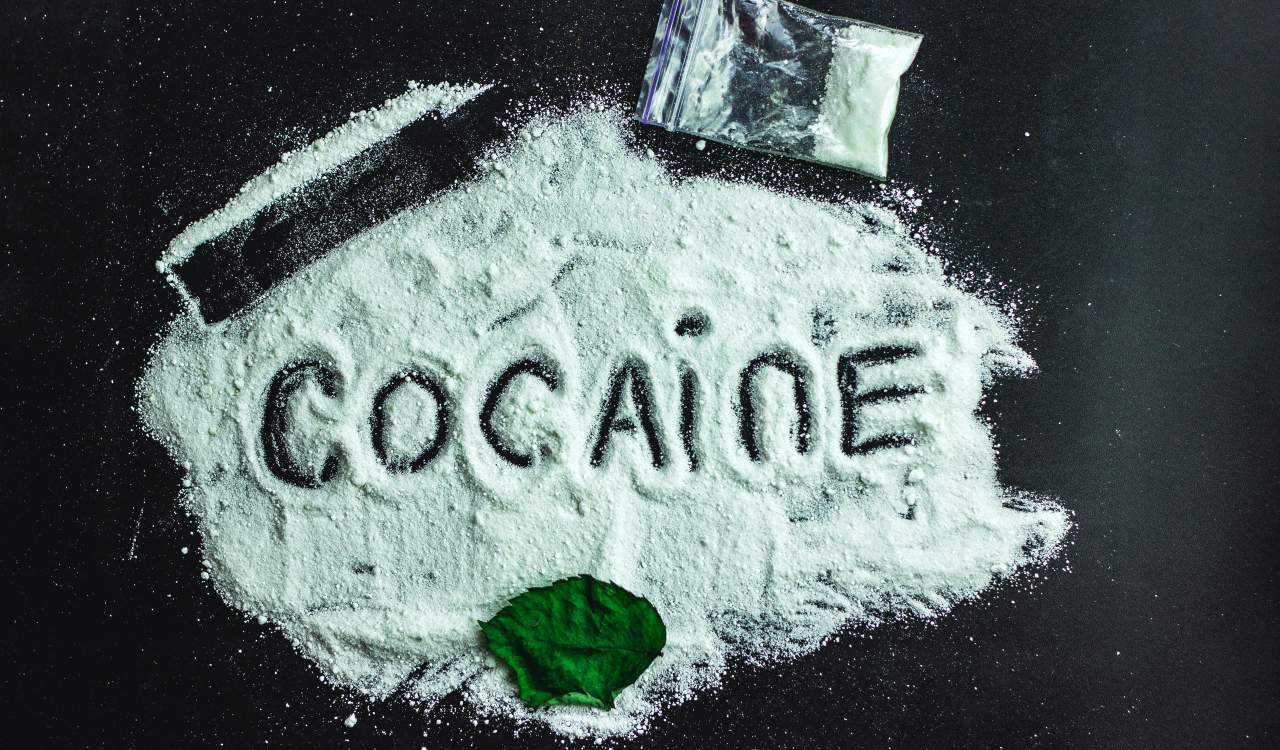
Treating Depression With Cocaine
- Time Period: 1800s to 1912
Cocaine, like Heroin before it, has not always been something you find on the street. There used to be a medical use for it, and you’d be surprised just how many things cocaine was used for. In one of the more reliable uses, cocaine was very commonly used for colds or allergy issues. Hay Fever, for example, was a very easy thing for cocaine to treat. Keep in mind, cocaine is used primarily through snorting, so you can easily affect the sinuses this way. Of course, we now know that cocaine is a version of tropane alkaloid.
Yet it is also a stimulant, and it has been noted that the active ingredients in stimulants can help with allergy issues. Many decongestants use them today. Stimulants have also been known to help people with things like seasonal depression. Thus, cocaine used to be given to people who had depression issues as recently as the early 1900s. The euphoric effect of cocaine, along with the high it could offer, would naturally help people forget about depressing issues for a while. Sigmund Freud was said to be a huge fan of the treatment. The U.S. FDA finally banned it in 1912 via the Pure Food and Drug Act, however.

Chloroform To Treat Asthma
- Time Period: 1850s to 1930s
Chloroform is likely known best by the world as the stuff that helps to knock people out in movies or TV shows. While it does not exactly work like that, chloroform can make people lose consciousness. It can even end lives if a person is exposed to it for too long. In 1910, a book known as Mother’s Remedies: Over One Thousand Tried and Tested Remedies From Mothers of the United States and Canada was published. The extremely long-titled book was written by Dr. Thomas Jefferson Ritter.
In it, he discussed a lot of terrible remedies that we do not use today. One of the most notable was the use of chloroform to treat asthmatic problems. In the 1800s and early 1900s, chloroform was not uncommon for doctors to use. They often used it as an anesthetic among other things, as no one realized its toxic nature yet. Doctors found chloroform to be so good that inhalers were made for asthmatic problems using the stuff. Today, it is mostly banned for medical use in developed countries.
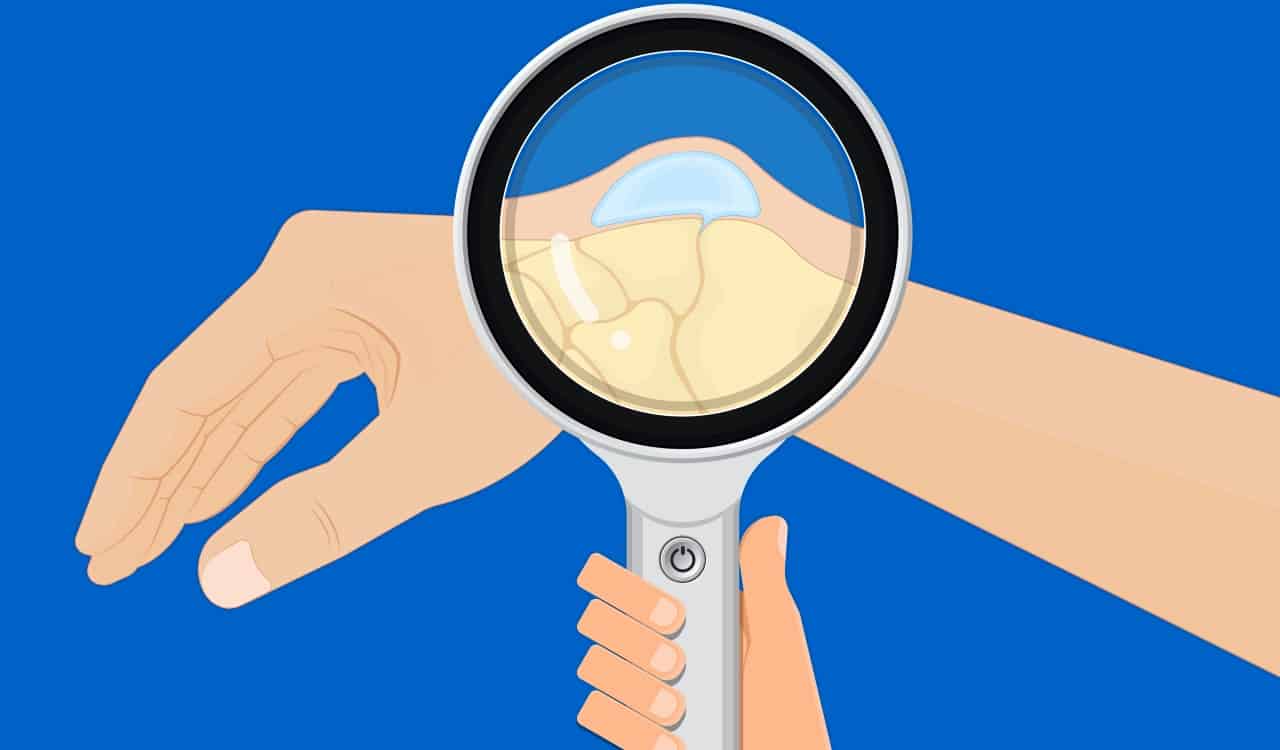
Bible Cysts Treated By Dead Man’s Hand
- Time Period: 1740s to 1800s
In the 1700s, cysts were not uncommon to see. It used to be believed that you could get rid of specific types that popped up on the hands or wrists by smashing them with a heavy book. While this could sometimes result in the cyst falling off, it could also cause further issues. By the late 1500s, the printing press made it possible for books to be printed in mass quantities. That obviously led to the Holy Bible being printed in multiple languages worldwide.
Early Bibles were usually big, heavy books and the most common book people owned. This led to bibles being used to smash cysts, inspiring the name “Bible Cyst.” The practice of hitting them is still in use today for many. However, some felt that smashing would not help. That led to other old medical treatments being implemented, with the craziest being to touch them with a dead man’s hand. The idea comes from Lorenz Heister, the same man who recommended smashing them too.
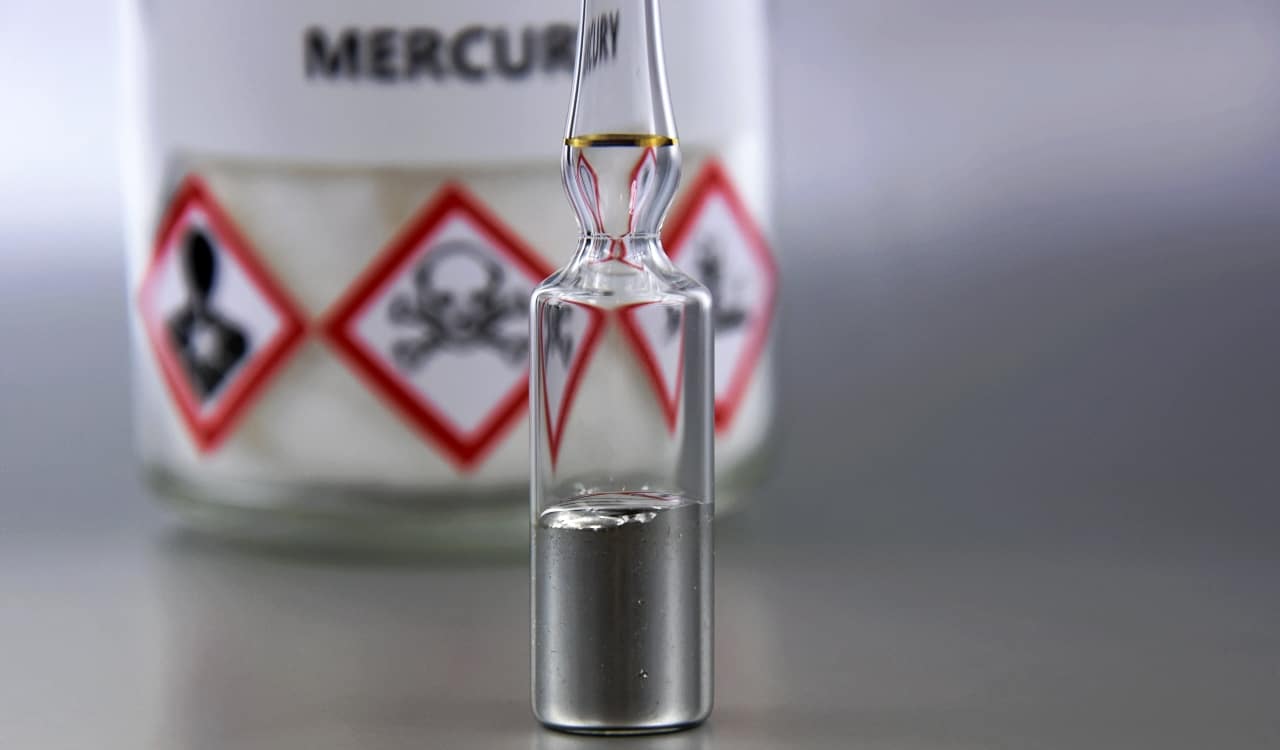
The Use Of Mercury
- Time Period: Early-16th Century to Mid-20th Century
Mercury used to be relatively common to see in the medical world, with some diseases only treated with it and nothing else. It might seem odd to see that today since mercury is a highly toxic chemical that we only use in incredibly small doses if it is used at all. Yet some believed it could be the cure to things like syphilis, a disease primarily caught through sexual transmission. In fact, the prime treatment for syphilis used to be mercury dating back to the 16th Century. It could either be eaten or injected into the body somehow.
Mercury might also be used for several other less serious illnesses too. The infamous explorers, known as Lewis and Clark, were accompanied by several men to help with their expedition. The men had so many pills containing mercury chloride that archeologists are now able to find the exact places they camped on their expedition, simply due to the high mercury content still in the area. The sad part in all of this is that doctors knew by the 18th Century that mercury was toxic, yet STILL gave it to people to treat syphilis up to the 20th Century!! Old medical treatments used like this are sad to see, honestly.

Python Bite To Treat Genital Ulcers
- Time Period: 6th Century To 14th Century
While many old medical treatments might be odd, some of them seem so insane that it is unbelievable people did them. Animal bites used to be a form of medical treatment, which was odd enough. Yet some assumptions of this treatment were weird. It is a true story, somehow, that people in China used to treat genital ulcers with a python bite. To be fair, China used to believe animal bites of various kinds could be used as a sort of therapy. The World Journal of Gastroenterology reports that python bites “were employed externally to treat ulcers on female genitalia.”
There are some tribes that used to partially scrap someone with the teeth of a snake or control a bite very briefly that would pierce the skin. However, these were venomous snakes that had venom they felt could be used to treat diseases. Sometimes, they’d just use the venom itself. This sort of made sense, as the venom might do something. Yet pythons are not venomous, so all you’d be doing is piercing the skin. At that time, this could be bad as it could open the person up for infection. Plus, did they have the snake bite the woman “down there” or somewhere else on her body? One might be significantly more painful!
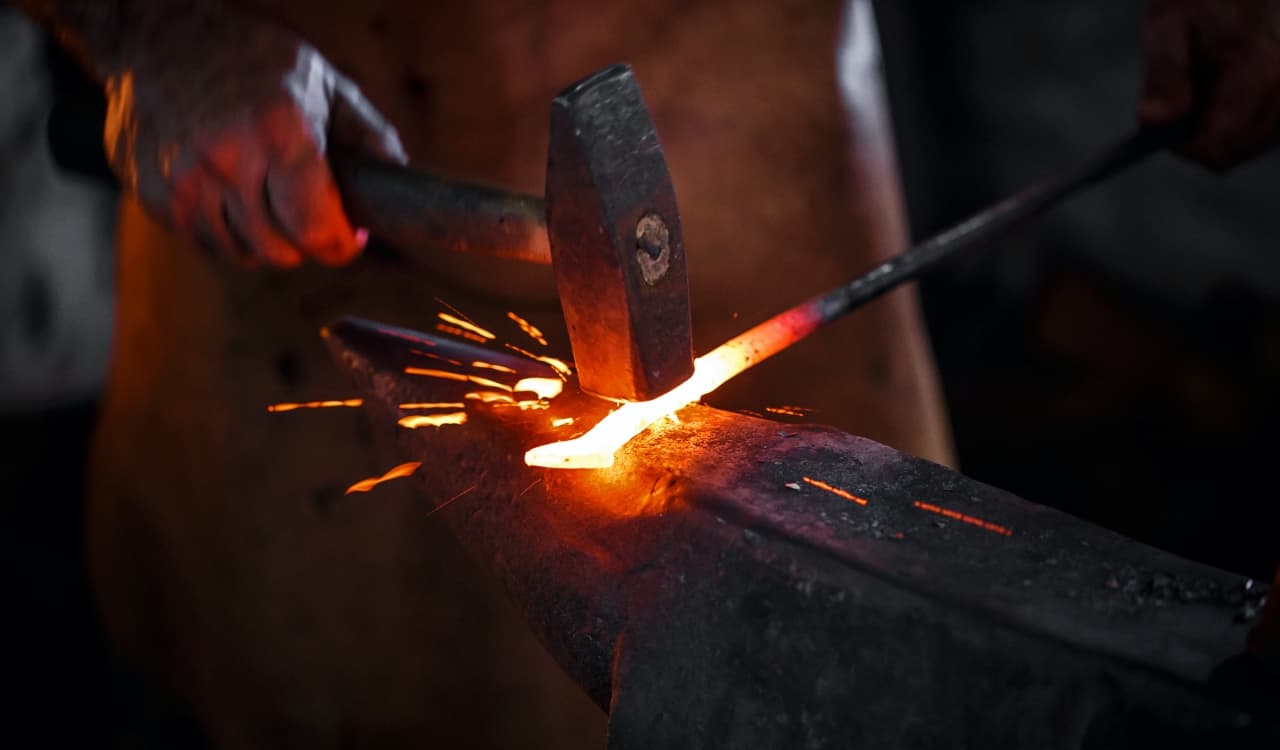
Hot Irons Treating Hemorrhoids
- Time Period: 12th Century
It is well-known how painful hemorrhoids can be. Some can be so bad that people have to undergo surgery to fix this. In medieval times, physicians came across a very effective method of removing the issue. While it should be noted that some of the most horrific and barbaric medical treatments in history happened during this time, the same could be said about a lot of medieval history. Although this specific method was borrowed from the Greek Physician, Hippocrates.
During the 12th Century, medieval doctors used to treat the most severe hemorrhoids by burning them off. They would use an incredibly hot cautery iron. Yes, they used to stick that hot iron up where the sun does not shine. While this was obviously very painful, the method did remove the hemorrhoids. Since this area does go through a lot of potential damage, it will self-heal from the burns. Today, we use targeted lasers to take them off. Recovery time is remarkably lower in comparison.
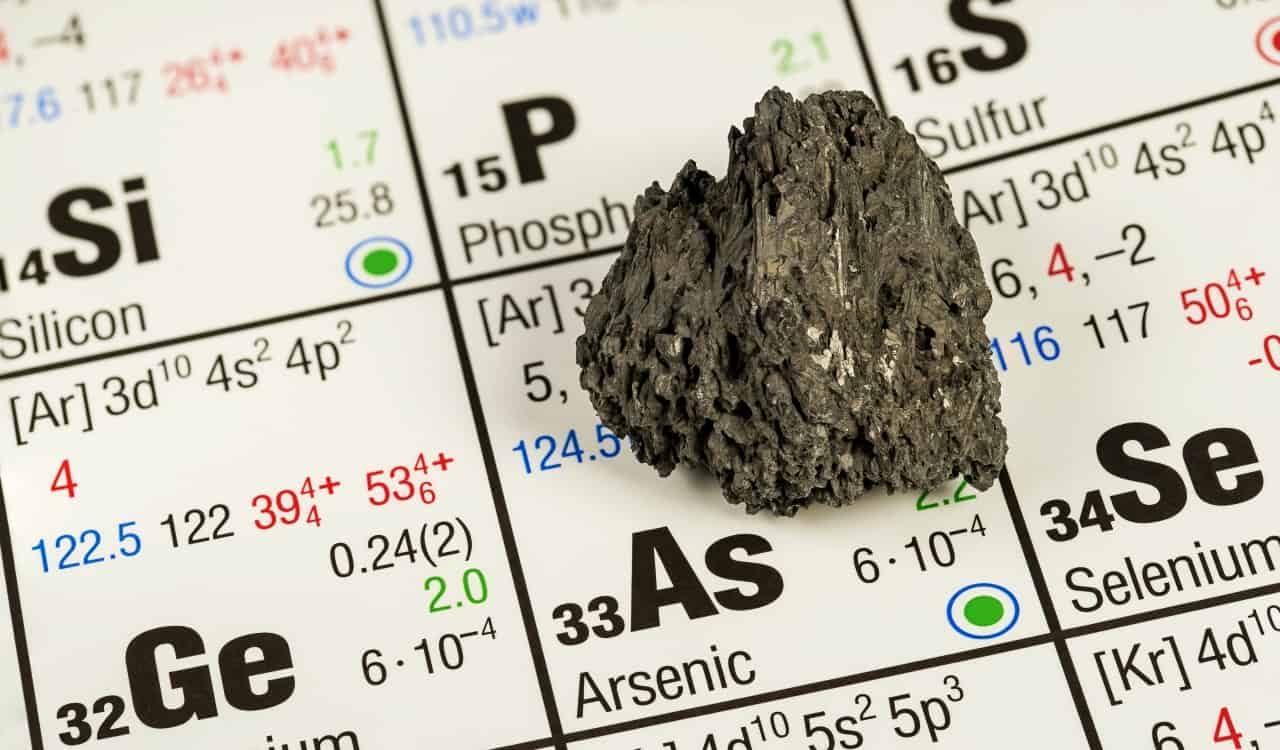
The Use Of Arsenic
- Time Period: 1800s to 1900s
Like mercury and chloroform, we clearly know the danger arsenic poses to humans today. Yet we were not initially aware of this many decades ago. This is why for many years, arsenic used to be given to people to help treat things like headaches, syphilis, and other blood disorders. However, it was also used to reduce fevers. This is important to keep in mind, as arsenic often was given for headaches and fevers simply due to the fact that it could reduce them. Naturally, headaches can be caused by many things. It could be muscular or a nervous system issue, sinus problems, and even a fever.
Arsenic happens to be toxic to human beings because it inactivates around 200 enzymes. Most of them go to cellular energy pathways, DNA synthesis, and repair. This inactivation will affect the nervous system and musculoskeletal system. Since fevers and headaches are usually immune system responses to issues, the inactivation of these enzymes will often stop both from happening. It could also clear the sinus cavity too. Of course, this exposure does come with a lot of potential problems such as that whole “death” thing.

Bloodletting
- Time Period: 440 B.C. to Today
To be fair, we do still use bloodletting today in modern medical treatments. However, the most common use is for rare diseases like hemochromatosis and polycythemia in the developed world. It’s also used as alternative medicine in less developed nations as bloodletting is able to starve bacterial pathogens of iron. That slows bacterial growth and could help with infections. Of course, this makes sense as your immune system ends infection. Antibiotics only target infection symptoms. However, bloodletting is one of the old medical treatments that has been done for thousands of years now.
It goes back to Ancient Greece and Egypt. The infamous Greek physician Hippocrates believed the body was made up of four humors: blood, yellow bile, black bile, and phlegm. The idea was that the body needed to be in balance, so if you were sick then naturally the body must be out of line. You needed to them reduce something from one of the humors, and blood was often the easiest to remove for obvious reasons. That led to bloodletting being used to treat pretty much everything early on. The reason Hippocrates likely believed in it so much is that this could be effective for some stuff but not for everything.

Cigarettes Were The Perfect Asthma Treatment
- Time Period: 1920s to 1960s
Reading the above header, you might laugh a bit. Yet it’s true that many physicians used to believe cigarettes could help people with asthma problems. Of course, one would naturally think the worst thing for an asthmatic person would be smoking, but not them. It could be that they were able to partially coat the throat a bit, and offer some aid due to the use of nicotine involved. We did not realize how addictive nicotine was back then, nor did people consider what’s in cigarettes beyond this.
In the 19th and 20th Centuries, smoking was so widely accepted that doctors often smoked in the room while seeing patients quite often. Early cigarettes were a bit harder to use but by the 1920s, menthol was added into most to help with this. Menthol is a very useful thing that could potentially help someone with asthma or sinus issues. Doctors seemed to ignore the idea of using menthol on its own for a while, which resulted in the recommendation of cigarettes.

Use Of Methamphetamines
- Time Period: 1893 to 1980s
Today, we know methamphetamines are relatively dangerous to use, especially long-term. We should point out that this is not exactly like the type of meth you might find on the street. That can be made of various substances, which the original is not like. Chemically, they are not the same as recreational meth includes numerous chemicals you can find around your home. To be honest, when the drug was first put on the market, it made sense for companies to market it as they did. Methamphetamines are stimulants that can be powerful for the human central nervous system.
They can be helpful for obesity as the drugs are able to curb appetites. They’re also helpful for narcolepsy as the high they offer is able to give the brain stimulation that will wear off. Once it wears off, you’ll be tired enough to sleep. On top of that, they were once used to help with ADHD-related symptoms often. The issue is that, unlike with other stimulants or even amphetamines, the role of methamphetamines has been reduced due to causing even more problems for humans. Physicians now rarely prescribe medications with this in them due to the likelihood of neurotoxicity and high addiction rates.

The Once “Wonder Drug” Known As Radium
- Time Period: 1918 to 1930s
Today, we are well aware that radiation and anything associated with it can be toxic to the human body. It is such an issue that we have to handle all radiation usage with extreme caution. Both Pierre and Marie Curie discovered radium back in 1898 and spent their entire lives studying radioactive materials. It is due to their sacrifice that we know the effects of radiation on the body. Both Marie and Pierre believed radium could be useful for a lot of things, and they were 100% right about that.
However, neither truly felt it needed to be used outside of specific needs. Yet quacks felt it could be used to cure numerous health complications. In the 1920s, some had the wild idea about adding Radium to drinks. One man named William J.A. Bailey invented RadiThor, which was basically radium dissolved in water. The Harvard drop-out was not a medical doctor but claimed the drink could “cure the living dead” and offer “perpetual sunshine.” He said it could cure impotence, aging, and treat arthritis too! Unsurprisingly, this was all crap. Several even died from radium poisoning.

Ear Candle
- Time Period: 1600s to Present
The Ear Candle has to be one of the craziest things one could ever think to use. While there are many old medical treatments that come off as odd, they can be forgiven usually. This is because there was at least some way to understand why the treatment was in play. Yet a candle in the ear just seems obviously dumb. Usually, a person laid down on their side with one ear up. A candle, often at least 12 inches, was placed inside the ear and lit.
The goal of this was to remove stuff from the ear like debris or other particles. The belief too was that the heat created some type of suction to remove even earwax out of the ear and connected it to the candle. Not only was this almost never effective, but worse, candle wax fell into the ear. This can cause burns and potential ear infections. Beyond that, people could partially lose hearing in the ear the wax fell into as wax build-up would be stuck inside the ear. Leading to impairment.
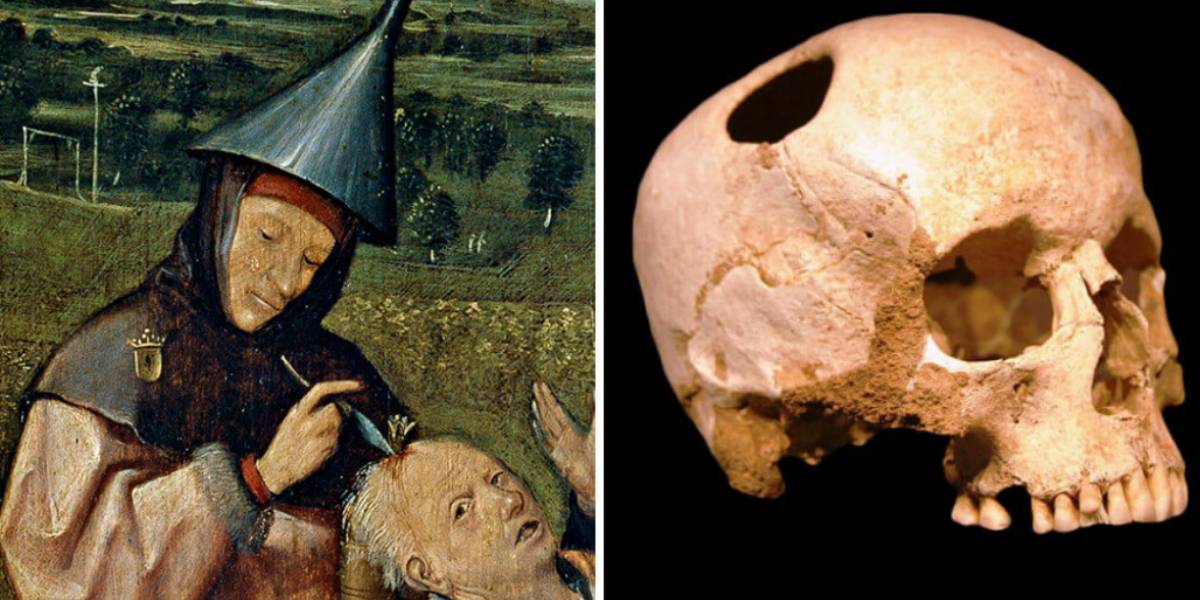
Trepanning
- Time Period: 5,000 B.C. to 1800s
Trepanning began simple enough, as did many old medical treatments. This happens to be the oldest known surgery humans performed on one another. In fact, it is such an old procedure that it has been traced back to 7,000 years ago in some of the earliest known civilizations. The procedure involves boring or essentially drilling a hole in the skull. Initially, the idea was that you could let any build-up of pressure out this way or even potentially evil spirits that have gathered in there.
It was widely assumed that spirits were the ones behind any mental illnesses or disorders. Some done in Peru were performed for emergency needs. People might be involved in war and could have skull fractures from it. To remove excess bone fragments, trepanation would be done. However, the most common reason was the assumption it could stop migraines, epilepsy, abscesses, blood clots, and much more. It didn’t help at all, and many even died from the surgery.

Psychic Surgery
- Time Period: Early 1900s
Imagine someone telling you that they were having surgery soon – not one performed by a regular surgeon but by a psychic person claiming to be capable of healing them. You’d likely want to slap them back to reality. Psychic surgery is a pseudoscientific procedure that is a form of medical fraud based on the illusion that a psychic could access otherworldly beings to heal you. Worst of all, they did this with their bare hands. Often, they used a finger to cut into the person and through sleight of hand, show that the person had lesions or even fake animal parts inside them.
Some psychics would actually really remove a part from a person’s body, whereas others would only cut in but not really remove something. The United States FDA and FTA does not allow this to be performed in the country but it does still happen elsewhere. Originally, it popped up in Brazil and the Philipinnes but it has since fallen out of favor there too. However, in spite of being one of the old medical treatments that have shown zero benefits, it has not been made illegal in either country. It is still legal in most African countries too as well as several South American ones.

Sacrificing Animals Or Humans To Save Another
- Time Period: 6,000 B.C. to 1000 A.D.
Sacrificing yourself to save another seems noble, but not when it comes to medicine. It used to be that people believed a God or Gods were in control of everything. Therefore, in order to get over sickness or a disorder, you needed to sacrifice people or animals to appease them. The same happened to ensure that rain comes or to make famine comes to an end. One very popular thing to do would be to have a priest sacrifice an animal near the person who needed to be “healed.”
If the person never healed from the problem they were going through, it was clear that they must have angered the Gods. Even if a child was the one affected, this would be the assumption. Either that or the Gods were punishing the child in place of a mistake their parent(s) made. If the person did recover, then the Gods must have been appeased. The sacrifice of an animal was performed to honor the God or Goddess that must have been angered.

